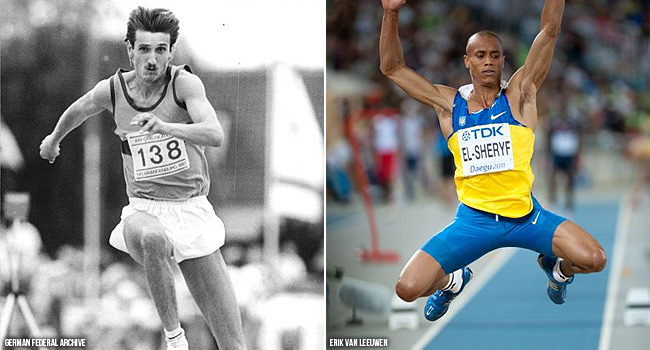
Answer: when it’s a European junior indoor record.
It wasn’t widely publicised at the time, but a couple of years ago European Athletics decided to scrap the existing set of European junior indoor records and start afresh.
Well, I say start afresh; what they actually did was take the 10th-best performance on the European junior indoor all-time list at that moment in time, and then any performance that subsequently bettered that mark would be ratified as a European junior indoor record.
Because that makes perfect sense, right?
Of course it doesn’t.
Their intentions are good, of course. EA wanted to have a set of records that were properly ratified by way of a post-competition doping test. Many of the past records, of course, were never subject to such a procedure.
It’s fine to create new rules. It happens quite often in this sport. But to apply those rules retroactively is just downright bizarre.
When the smoking ban was introduced in the UK back in 2007, the authorities didn’t study hours of old CCTV footage and hand out fines to offenders from years gone by when that law wasn’t in place.
Whenever a new rule is introduced in athletics that impacts upon records, it is standard practice for the new rule to be applied from that moment forward and that existing records remain as they are.
But this move by EA has just led to a completely messed-up set of records. Performances are being reported as “European junior indoor records” even though they’re vastly inferior to the previous marks. Just one or two of these new records can be genuinely classed as the best performance ever by a European junior athlete; the very essence of what a record should be.
On their website, European Athletics only list the new set of marks, so I’ve expanded the Wikipedia page of European junior records to show both the ‘proper’ records and the new ones. This page in itself – with all the various colour-coding of performances – highlights the ridiculousness of it all.
No event illustrates it better than the men’s triple jump. Volker Mai’s 17.14m is the world junior indoor record, but it is no longer the European junior indoor record. Instead, Ukraine’s Sheryf El-Sheryf’s 16.60m is now the European junior record, even though that isn’t even a national junior record.
Logic dictates that if you hold a world record, then that mark is also a continental record. And a continental record is also a national record.
But European Athletics have now thrown a spanner in the works which screws up all logic.
It also raises several other questions. Why pick an arbitrary mark like the 10th-best performance on the all-time list? And why hasn’t this approach been adopted for the outdoor European junior records or even the outdoor senior records?
It’s a bit like the idea that some people proposed a decade or two ago, suggesting that we do away with existing world records (as many were set by athletes believed to be dopers) and to start from scratch from the year 2000 to ensure a ‘clean’ set of records.
Now, I’m all for cleaning up the sport, but this ‘clean start’ idea isn’t the solution. As you can see from the current set of millennium records, there are still a handful of marks set by athletes who have served a drugs ban.
In the past year or two, I have been contacted by numerous athletes and parents asking if their performances are a European junior record. I try to explain things as best I can do them, but it leaves them more baffled than they were before.
Ours is already a complex sport that is constantly striving to attract a wider audience. Simplicity is the key; why make things more complicated than they need to be?




